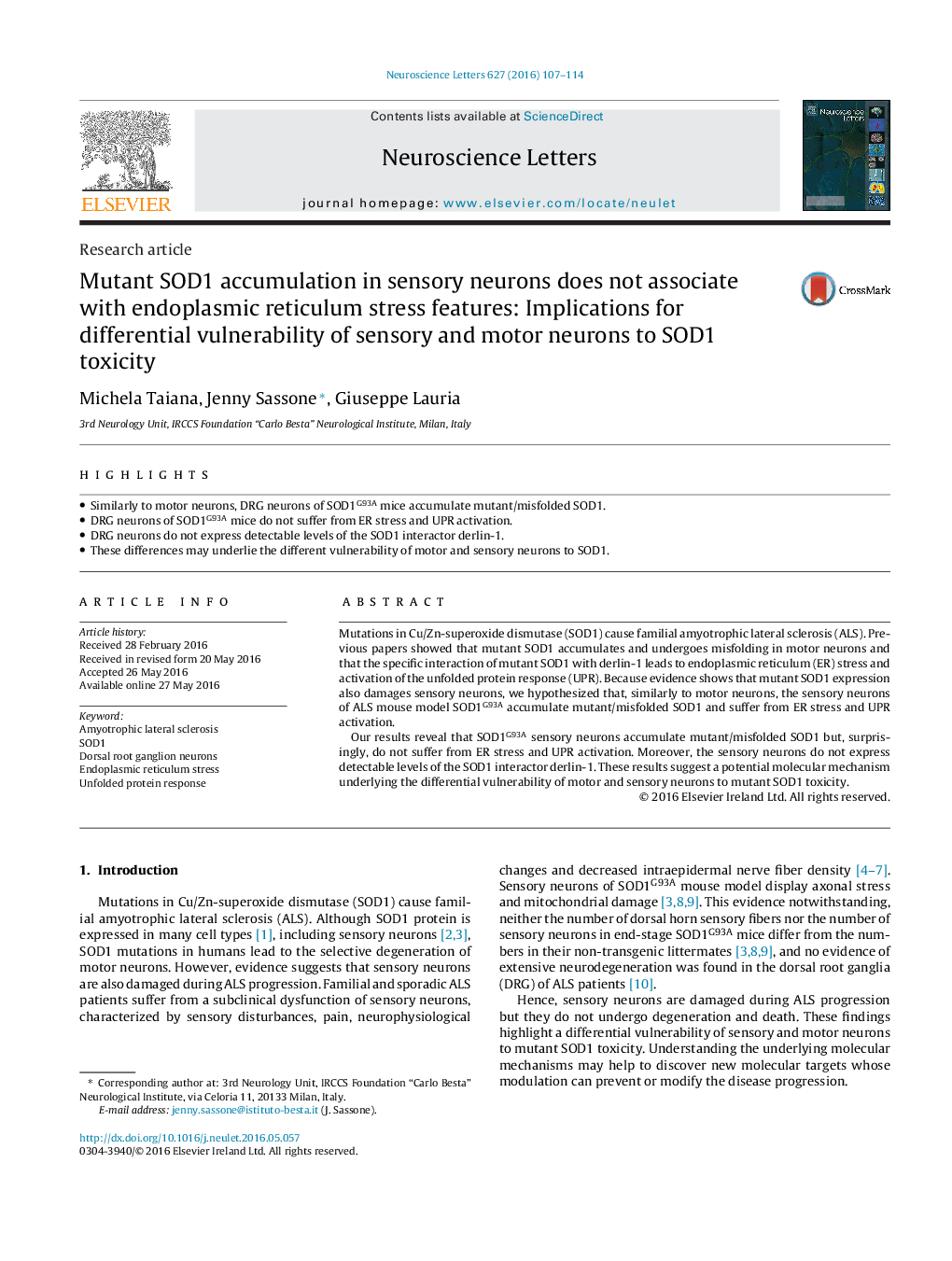| Article ID | Journal | Published Year | Pages | File Type |
|---|---|---|---|---|
| 6279463 | Neuroscience Letters | 2016 | 8 Pages |
â¢Similarly to motor neurons, DRG neurons of SOD1G93A mice accumulate mutant/misfolded SOD1.â¢DRG neurons of SOD1G93A mice do not suffer from ER stress and UPR activation.â¢DRG neurons do not express detectable levels of the SOD1 interactor derlin-1.â¢These differences may underlie the different vulnerability of motor and sensory neurons to SOD1.
Mutations in Cu/Zn-superoxide dismutase (SOD1) cause familial amyotrophic lateral sclerosis (ALS). Previous papers showed that mutant SOD1 accumulates and undergoes misfolding in motor neurons and that the specific interaction of mutant SOD1 with derlin-1 leads to endoplasmic reticulum (ER) stress and activation of the unfolded protein response (UPR). Because evidence shows that mutant SOD1 expression also damages sensory neurons, we hypothesized that, similarly to motor neurons, the sensory neurons of ALS mouse model SOD1G93A accumulate mutant/misfolded SOD1 and suffer from ER stress and UPR activation.Our results reveal that SOD1G93A sensory neurons accumulate mutant/misfolded SOD1 but, surprisingly, do not suffer from ER stress and UPR activation. Moreover, the sensory neurons do not express detectable levels of the SOD1 interactor derlin-1. These results suggest a potential molecular mechanism underlying the differential vulnerability of motor and sensory neurons to mutant SOD1 toxicity.
